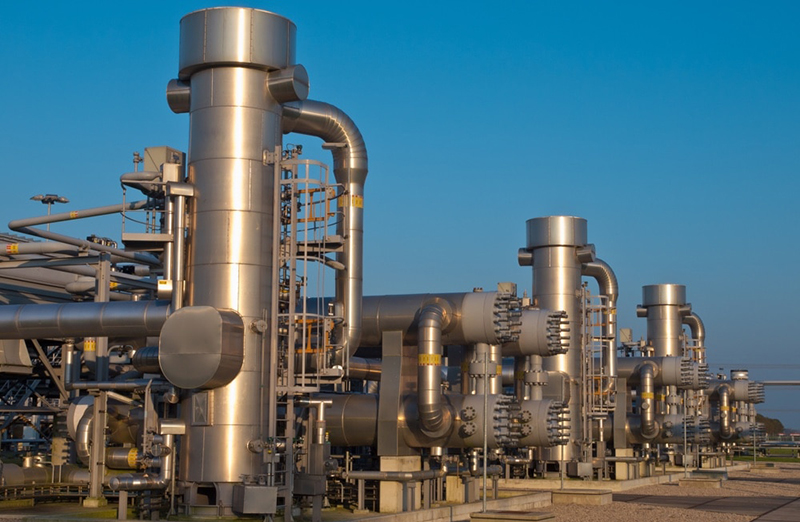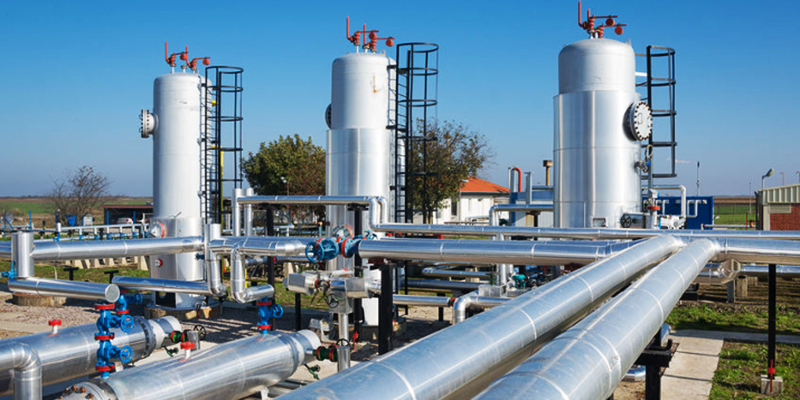Gas handling refers to the collection of practices, technologies, and systems used to manage, store, transport, distribute, and control gases in various applications. It is an essential aspect in many industries, including manufacturing, healthcare, scientific research, and energy production. As industries continue to evolve, the need for efficient and safe gas handling systems becomes increasingly critical. The goal of gas handling is to ensure the safe and efficient use of gases while maintaining their integrity and preventing accidents or leaks.
Key Components of Gas Handling Systems
1- Gas Storage
High-Pressure Cylinders: Commonly used for storing gases such as oxygen, nitrogen, and helium at high pressures.
Bulk Storage Tanks: Used for larger quantities of gases, often found in industrial settings.
Cryogenic Tanks: Specialized storage for gases that are in liquid form at extremely low temperatures, such as liquid nitrogen or liquid oxygen.
2- Gas Transportation
Pipelines: Used for transporting gases over long distances, particularly in the natural gas and industrial gas sectors.
Transport Vessels: Includes specially designed trucks, railcars, and ships that safely transport and move gases between locations gases.
3- Gas Delivery Systems
Regulators: Control the pressure of the gas being delivered from the storage system to the point of use.
Manifolds: Distribute gas from a single source to multiple usage points.
Flow Meters: Measure the flow rate of gases to ensure precise and controlled delivery.
4- Gas Detection and Monitoring
Gas Detectors: Devices that detect the presence of gases and monitor concentration levels.
Alarms and Sensors: Provide warnings in case of leaks or dangerous levels of gases.
5- Gas Purification and Treatment
Filters and Scrubbers: Remove impurities from gases to ensure purity and safety.
Compressors and Decompressors: Adjust the pressure of gases for storage, transport, or use in various applications, ensuring they are at the optimal pressure for use.
6- Specialized Equipment
Gas Analyzers: Determine the composition of gas mixtures for quality control and safety.
Cryogenic Equipment: Handles gases at very low temperatures safely.
High-Pressure Equipment: Manages gases stored and transported at high pressures, ensuring safety and efficiency.
7- Safety Protocols
Ventilation Systems: Ensure proper airflow and prevent accumulation of hazardous gases.
Personal Protective Equipment (PPE): Includes masks, gloves, and other gear to protect workers handling gases.
Emergency Procedures: Plans and equipment for dealing with gas leaks or accidents.

Advantages of Gas Handling Systems
1- Safety
Leak Detection and Prevention: Advanced monitoring systems detect gas leaks early, preventing accidents and ensuring a safe working environment.
Emergency Shutoff: Automated shutoff valves and alarms reduce the risk of catastrophic failures.
Ventilation Systems: Proper ventilation prevents the buildup of hazardous gases.
2- Efficiency
Precise Control: Regulators, flow meters, and valves provide precise control over gas flow and pressure, ensuring optimal use.
Reduced Waste: Efficient systems minimize gas wastage, saving costs.
Automated Monitoring: SCADA systems and other automated controls enhance operational efficiency by providing real-time data and remote management.
3- Reliability
Regular Maintenance: Routine checks and maintenance ensure the system operates reliably.
Redundant Systems: Redundancy in critical components ensures continuous operation even if one part fails.
4- Flexibility
Scalability: Systems can be designed to scale with growing needs.
Versatility: Capable of handling various gases and adapting to different applications.
5- Quality Assurance
Purity Control: Gas purification systems ensure high-purity gases, essential for sensitive applications like scientific research and healthcare.
Consistent Supply: Reliable delivery systems ensure a consistent supply of gases, maintaining process integrity.
Disadvantages of Gas Handling Systems
1- Cost
High Initial Investment: The setup of a comprehensive gas handling system can be expensive.
Maintenance Costs: Ongoing maintenance and periodic upgrades can add to operational costs.
2- Complexity
Installation and Setup: The installation process can be complex and time-consuming, requiring skilled technicians.
Operation: Requires trained personnel to operate and manage the system effectively.
3- Space Requirements
Storage and Equipment: Bulk storage tanks, pipelines, and other equipment require significant space, which may be a limitation in smaller facilities.
4- Risk of Equipment Failure
Mechanical Failures: Despite regular maintenance, there is always a risk of equipment failure, which could disrupt operations.
Human Error: Mismanagement or improper operation can lead to safety hazards or system inefficiencies.
5- Regulatory Compliance
Stringent Regulations: Compliance with industry standards and regulations can be challenging and may require regular audits and updates to the system.
Documentation: Maintaining detailed records and documentation for compliance purposes can be burdensome.
Applications of Gas Handling
-
Industrial Manufacturing
Welding, cutting, and chemical production processes often require precise gas handling to maintain product quality and safety.
-
Healthcare
Medical gases such as oxygen, nitrous oxide, and anesthetic gases are essential in treatments and surgeries. Proper gas handling ensures patient safety and effective delivery.
-
Scientific Research
Laboratories use various gases for experiments, equipment operation, and maintaining controlled environments.
-
Energy Sector
Natural gas is a major energy source, and its handling involves extraction, processing, transportation, and distribution to consumers.
For more information about our gas handling systems or to discuss how we can help you implement the best solutions for your specific needs, please do not hesitate to contact us. Our team of experts is ready to provide you with the support and guidance necessary to ensure your operations run safely and efficiently.

